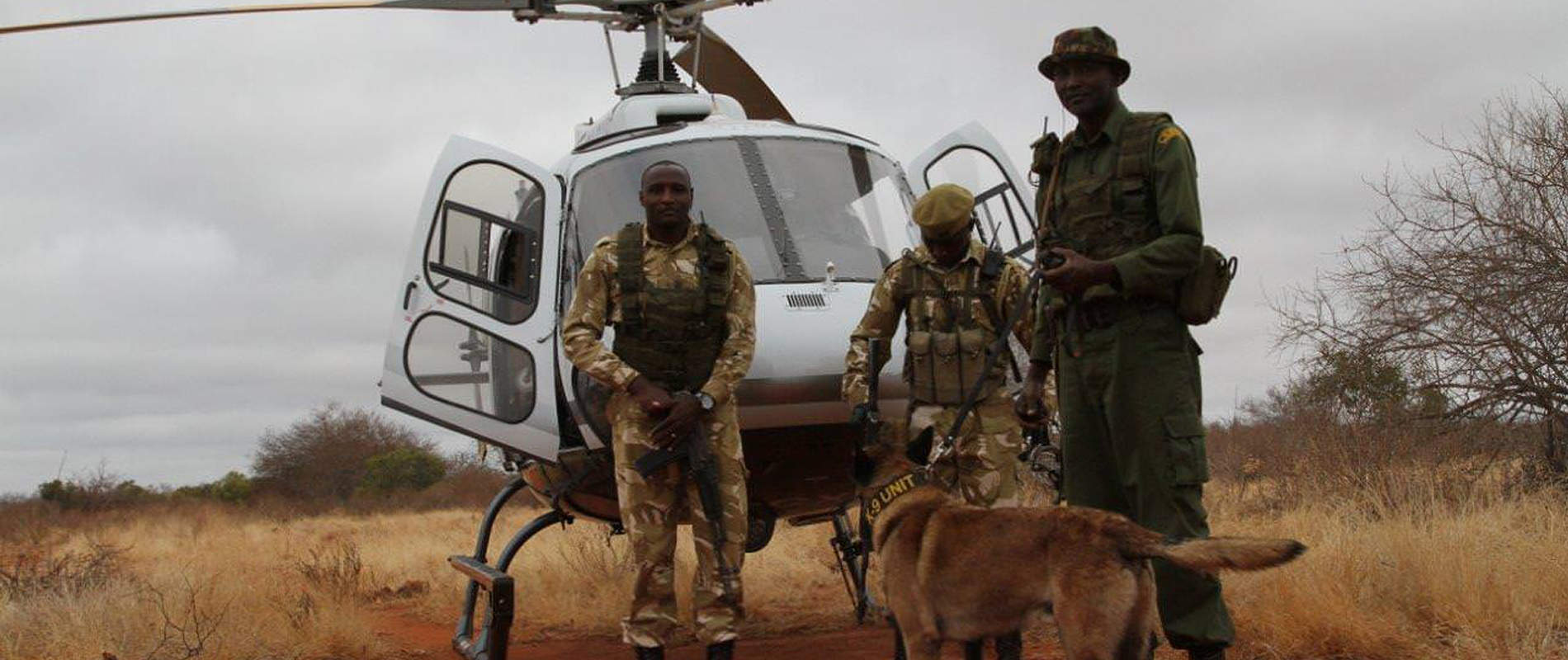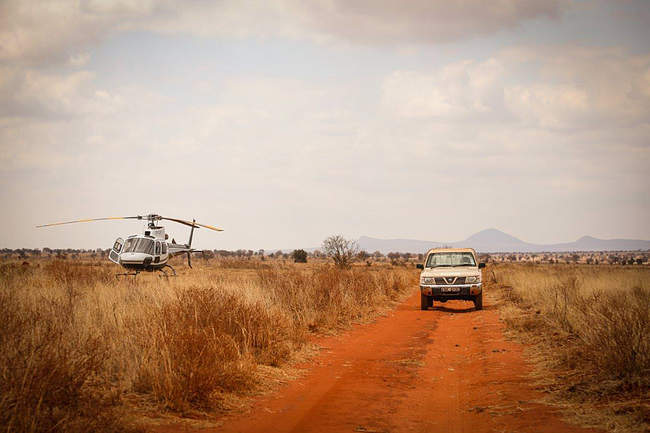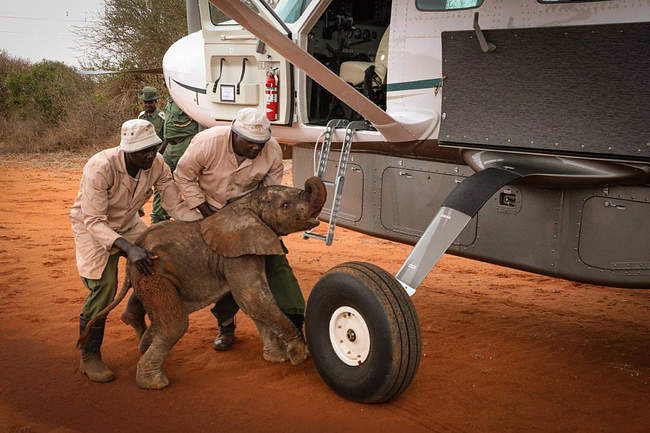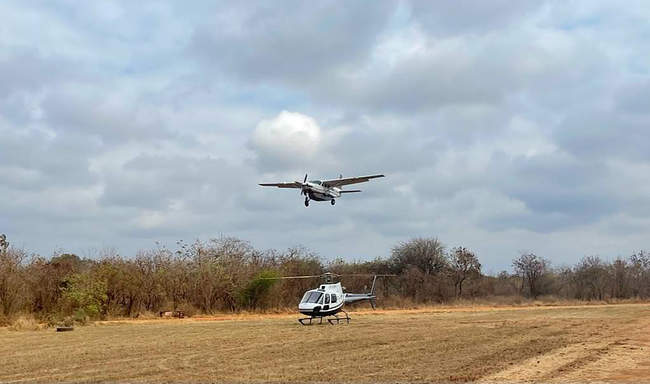October was a challenging month not least because of the effects of a prolonged drought coming into full effect. Not only was wildlife suffering from lack of food, but there was also a noticeable increase in illegal activities, especially in the ranches bordering Tsavo West National Park and as far as Amboseli and Kipini Conservancy.
Three giraffes were sighted by a Wildlife Works pilot on Mgeno Ranch and were subsequently treated with assistance from SWT's helicopter. One of our KWS/SWT Mobile Veterinary Units went to Amboseli to treat a zebra, while a young elephant was reported to have a snare around its neck on the Taita Sisal Estate. In the same area, another elephant was darted from the helicopter to treat an unknown leg injury. Much further afield one of our fixed wing aircraft was deployed to transport a KWS vet to rescue a speared hippo in Lamu County.
Aerial support was also required for three orphan animal rescues: Two elephant calves were rescued and transported in our Cessna Caravan to the Trust's nursery units. The third orphan rescued was actually a young hartebeest, which was collected from Voi by one of our aircraft that was patrolling in the area and brought back to our Kaluku Headquarters for to receive specialist care.
Four elephant carcasses were discovered throughout the course of the month. Three of these were suspected to be from natural causes, most likely drought. The fourth carcass appeared to have been a poaching incident, with both tusks cut-out and evidence of human activity (livestock) in the immediate vicinity.
Livestock illegal grazing in the protected ares has reached a boiling point as the drought continues, with tens of thousands of cattle, sheep and goats in the Tsavo National Parks. While the incursions are ongoing, progress has been made in reducing livestock numbers, but the situation is unlikely to go away completely until the onset of the rains. Frustratingly, herders have also proceeded to light fires, which kept our ground teams and pilots busy. A total of 8 bushfire callouts were attended to by the Aerial Unit, in the Chyulu Hills National Park and the adjoining Kuku Ranch.

Only two human-elephant conflict cases were attended to in October by the SWT helicopter. In both instances, 3 bull elephants were pushed several kilometres out of community farmland and back into Tsavo East NP. Other illegal activities observed included honey harvesting, which was investigated and confirmed by a ground team, unfortunately without a result, and suspected mining activity with a nearby fireplace.

In October our pilots were treated to a large number of sightings of wild dog in particular, with a pack of 25 being sighted on multiple occasions, as well as a pack of 20. As is typical this time of year, there was also an increase in lion sightings, with lions concentrating, along with other wildlife species, in close proximity to the remaining water sources. Some rare civet sightings were also enjoyed.



